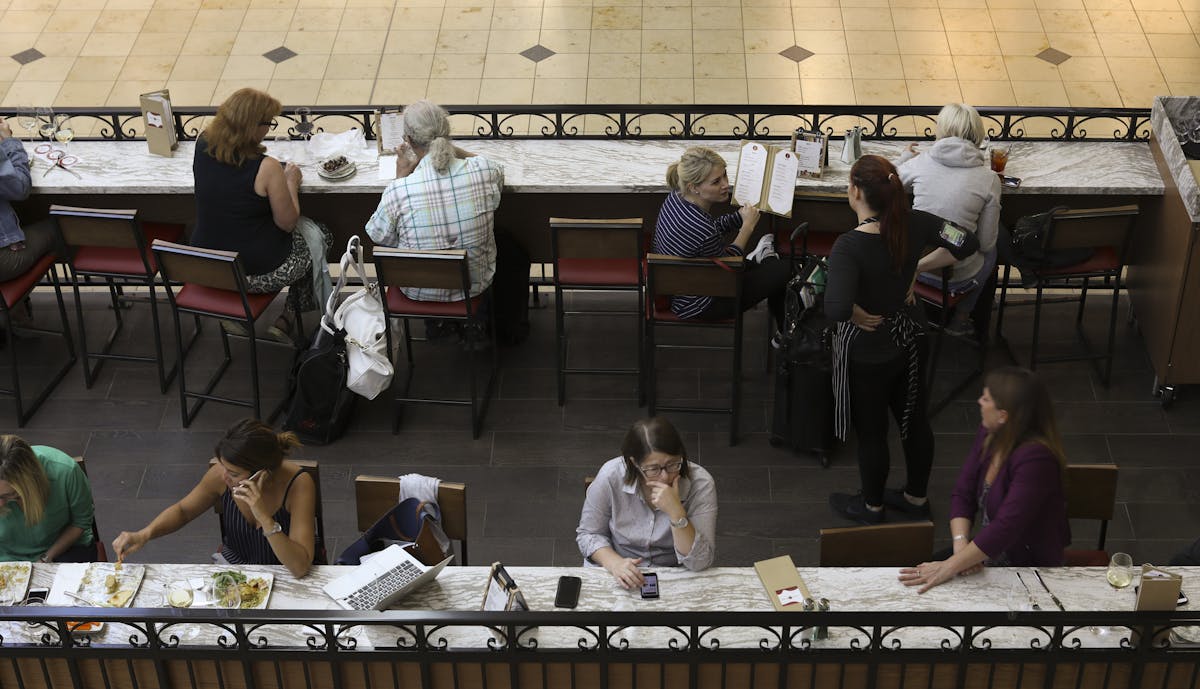Of the 41 million travelers and workers who trudge through the Minneapolis-St. Paul International Airport every year, few will likely remember the unassuming carpet that snakes through its concourses and terminals, protecting foot and floor alike.
This turf takes a beating, and it shows.
Some weeks ago, the Metropolitan Airports Commission (MAC), which owns and operates MSP, set aside $750,000 to replace tired swaths of the wall-to-wall, mostly in areas experiencing heavy traffic. The work will be done in time for the Super Bowl next February, ensuring MSP Airport looks shipshape for the expected hoard of football fans.
The news was met with little fanfare — unlike the frenzy that ensued two years ago, when Portland International Airport (PDX) replaced 13 acres of its 1980s-era teal-toned carpet. The move prompted a wave of nostalgia throughout the Pacific Northwest so delightfully weird it seemed like a fitting plot for a "Portlandia" episode.
Twitter, Instagram and Facebook sites were created to celebrate the departed carpet. Devotees were tattooed with its distinctive design. Patches of the spent rug, which was entirely recycled, were crafted into mouse pads, coasters, and keychains. A local brewery concocted an India pale ale called PDX Carpet. And Portland Trail Blazer Damian Lillard endorsed an Adidas sneaker bearing the PDX imprimatur.
The tech website Gizmodo declared it a "hipster icon."
The PDX carpet featured a series of blue, red and purple slashes and dots "inspired by the radar patterns seen in the control tower screens of the runways and planes landing," said Laura Hill, a Portland architect who helped design it. It was both flashy — and brainy.
"It was very unique," said Portland Airport spokeswoman Kama Simonds.
People would often take "foot selfies" featuring the carpet and then post them on social media.
"It was like a welcome home map. It became a thing," Simonds said. "We'd like to take credit, but it's really the community's love affair with the carpet."
All that being said, a similar flirtation has yet to develop between Minnesotans and the carpet at MSP, which features a series of gray blocks with occasional red stripes that add a little pop. The design is understated, almost modest, certainly not braggadocio — much like the state it serves.
"I don't see that happening here," said Jeff Nawrocki, the MAC's assistant director of MSP Operations/Facilities, when asked about the PDX carpet phenom.
Nawrocki is more concerned with keeping MSP's carpet tidy — no small feat, given the drubbing it gets from roller bags, frequent spills of food and drink, carts ferrying travelers about, and construction vehicles working on the airport's ongoing $1.6 billion overhaul.
Chewing gum is perhaps the most pernicious enemy of airport carpet because it flattens from frequent foot traffic, ultimately turning into a shiny black disc. The airport uses a beet juice concoction on a daily basis to combat it.
"I was skeptical at first," Nawrocki admits, "but it really does work."
The carpets are vacuumed hourly during peak travel times, and a Zamboni-type machine shampoos the rug every month, usually later at night. Spot stain removal is a constant task.
All of this maintenance might drive rug lovers to terrazzo, but that flooring has its downside, too.
"It tends to be noisier," Nawrocki says. Though easier to clean, it can crack.
The MAC has set aside $23 million to replace flooring beginning in 2019 at Terminal 2 (Humphrey) and 2021 in Terminal 1 (Lindbergh), with terrazzo planned for public walkways and carpet for gate areas. MAC officials and an architectural firm will decide the ultimate configuration. In the meantime, worn areas will be replaced with the existing design.
An older MSP carpet design in the rental car area of Terminal 1 did enjoy a brief brush with "fame."
The website carpetsforairports.com notes the design's "faux-naïf depictions of airplanes, the directional vectors and the wavy contour lines, all popular airport motifs. But what on earth are we to make of the legless teddy bears that are scattered across MSP's bulk?"
Nawrocki seemed puzzled by this description. "I'm not aware of it being referred to as 'headless teddy bears.' " he wrote in an e-mail. "We refer to it as a 'chopstick' pattern."

US government agrees to $138.7M settlement over FBI's botching of Larry Nassar assault allegations
Caitlin Clark is set to sign a new Nike deal valued at $28 million over 8 years, reports say
Paris mayor is confident that water quality will allow Olympic swimming in the River Seine
Former Green Bay player Kayla Karius leaves South Dakota to return to her alma mater as coach

